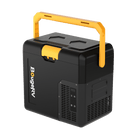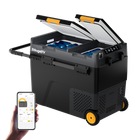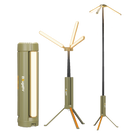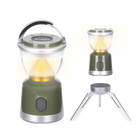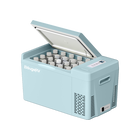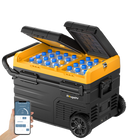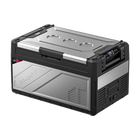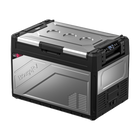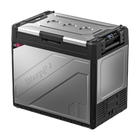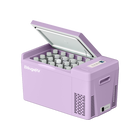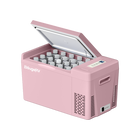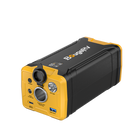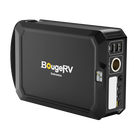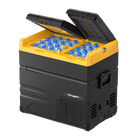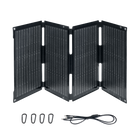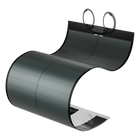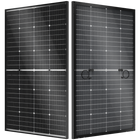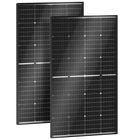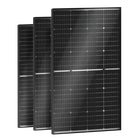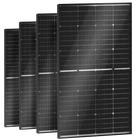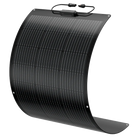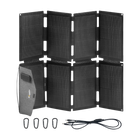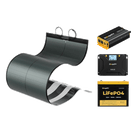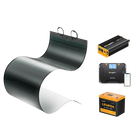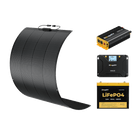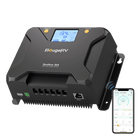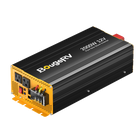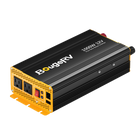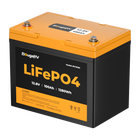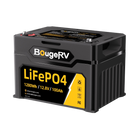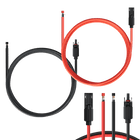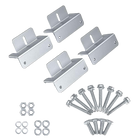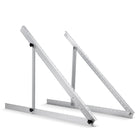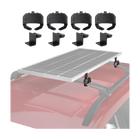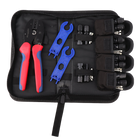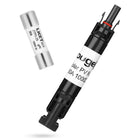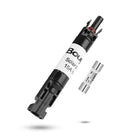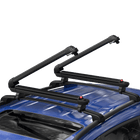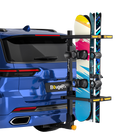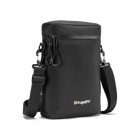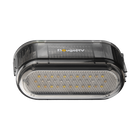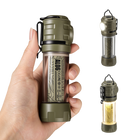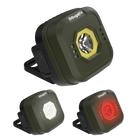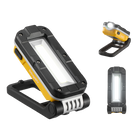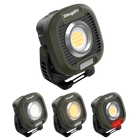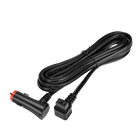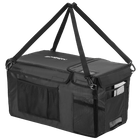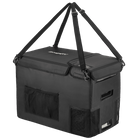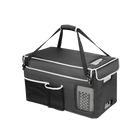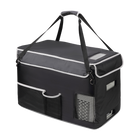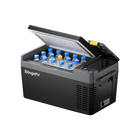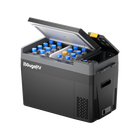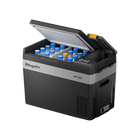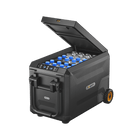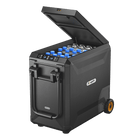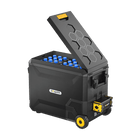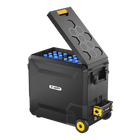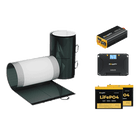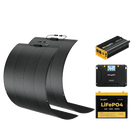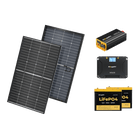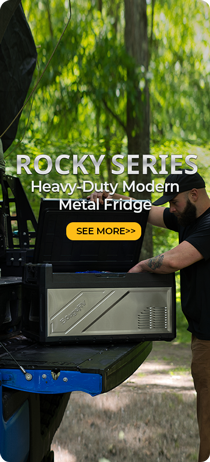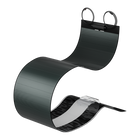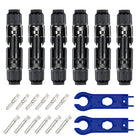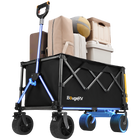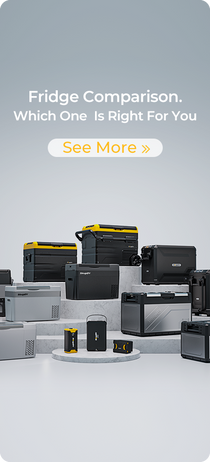Everything You Need to Know About Solar Blankets


Are you an outdoor enthusiast who loves camping or hiking? Or do you like to travel in an RV or go on long road trips? Either way, you need a reliable power source to charge your appliances and devices. This is where solar blankets come in.
Solar blankets are portable and lightweight solar panels you can easily pack and take on your trips. They are an excellent alternative to traditional solar panels and can provide a sustainable energy source wherever you go.
What is a Solar Blanket?
Solar blankets have solar cells attached to a flexible cloth backing to be rolled or folded up and packed away. They’re portable solar panels made of photovoltaic cells, which convert sunlight into electricity.
These cells are sandwiched between layers of protective material and are lightweight and flexible, making them easy to fold and store.
Types of Solar Blankets
Different types of solar blankets are available in the market, each with its features and benefits. The common solar blankets types are:
Monocrystalline Solar Blankets. Made of high-grade silicone, monocrystalline Solar Blankets are known for their efficiency and durability. They can produce more power per square inch than other solar blankets and are ideal for high-demand applications.However, they have some disadvantages, like lower performance when the temperature is too high and on cloudy days. So, place them at a more proper angle on sunny days. Besides, dirt or snow can easily break the panels.
Polycrystalline Solar Blankets. Made of multiple silicon crystals, polycrystalline solar blankets are less efficient than mono-crystalline solar blankets. But they can harness more sun on cloudy days than monocrystalline solar blankets do.Polycrystalline cells are cheaper but can last as long as monocrystalline cells. They’re a more affordable alternative if you're on a budget.
Thin-film Solar Blankets. Thin-film solar cells are different from crystalline cells. With silicone set on thin layers on a surface, these cells can adapt to flexible surfaces, resist high temperatures, and perform even on cloudy days.Thin-film solar blankets can easily be rolled up and transported, making them ideal for camping, hiking, and other outdoor activities. They are also commonly used in military and disaster relief efforts because of their portability and durability.
However, they are less efficient than crystalline ones but more cost-effective and easier to install.
Benefits of Solar Blankets

-
Portability. Solar blankets are portable and lightweight . Some CIGS thin-film solar panels are only 2.2 kg, nearly four times lighter than others, making them easy to pack and take with you on your trips. They are ideal for camping, hiking, and RVing. In BougeRV, we designed a carry bag to store solar blankets and other conversion cables, mobile phones, watches, etc., in a laptop size.
-
Sustainability. Solar blankets provide a sustainable energy source that is clean and renewable. They are an excellent alternative to traditional generators that rely on fossil fuels.
-
Cost-effective. Solar blankets are affordable and can help you save money on your energy bills in the long run. They require little maintenance and can last for many years.
-
Solar blankets are easy to set up and use. Unfold the solar blanket in the sun, and they begin to work. Solar blankets come with connectors that charge your devices and appliances directly from the solar panel.
-
Versatility. Using solar blankets, you can charge batteries, power appliances, and provide electricity for various devices. They are ideal for outdoor activities, emergencies, and power outages.
Solar Blankets Drawbacks
Though solar blankets have several benefits, there are also some drawbacks to consider:
-
Less efficient than solar panels. Solar blankets are less efficient than traditional solar panels, so they may take longer to charge your devices and appliances.
-
Solar blankets have limited power output. Solar blankets have a limited power output, which means they may not be able to provide enough electricity for high-demand appliances like air conditioners and refrigerators.
-
Weather-dependent. Solar blankets rely on sunlight to produce electricity, which means they may not work as well on cloudy days or in areas with limited sunlight. But luckily, you can still get one portable CIGS solar blanket, characterizing diodes, that performs better than monocrystalline silicon panels when in low-light conditions.
-
Easy to be stolen. Compared to typical solar panels, CIGS solar blankets are more portable and lightweight so that someone can easily fold them and steal them away.
Solar Panels Vs. Solar Blankets: Which One is Better?

Image source: 4wdingaustralia
Both solar panels and solar blankets have their advantages and disadvantages. Solar panels are more efficient and have a higher power output, which makes them ideal for powering high-demand appliances. However, they are heavier and less portable than solar blankets.
Solar blankets are lightweight, portable, and easy to use. They are ideal for camping, hiking, and other outdoor activities. Solar panels or solar blankets? It depends on your preferences.
What Should I Look for in a Solar Blanket?

When choosing a solar blanket, there are several factors to consider: features such as built-in USB ports, adjustable kickstands, and integrated storage pockets for ease of use.
-
Material
Cheap materials will make the solar blanket more affordable. However, you risk having a solar blanket with low durability and is subject to damage. Solar panels made of quality material tend to last longer.
-
Size
Choose a solar blanket the right size to offer enough power to charge your batteries and run your appliances. Solar blankets of bigger sizes are capable of producing more energy.
So, depending on your demands, choose a larger or smaller solar panel to generate the required power. For example, you can always select more oversized solar blankets to power your camping fridge. You can start by Calculating how much energy you will need over a day (in amp hours or watts).
-
Weight
Solar blankets' weight varies between 2 kgs and 17 kgs. Unless you require plenty of power, look for a solar blanket that is lightweight and easy to carry. The main features of solar blankets are portability and ease of use when traveling.
-
Others
Despite considering the size, solar blankets are foldable, occupying little space when not in use. Therefore, the primary consideration regarding their size is the amount of electricity they can generate.
Consider the additional features of the solar blanket, such as the ability to connect with various batteries and devices. For example, can it charge appliances directly, or does it need a battery?
Consider if there are additional features such as handlers to carry it or even a matching kit for connecting the solar blanket to various devices.
How to Set Up a Solar Blanket?
Installing a solar blanket is much easier without doing the complex mounting job. You can set up your solar blankets following the four easy steps:
1. Find a sunny spot.
2. For the best result, unfold and set the blankets up and point them directly to the sunlight. You can place the blankets on a bonnet, windscreen, roof rack, or ground. Besides, rotate the solar cells ideally at around 15° to 40°. Don’t just lay the panels out in the light without the sun hitting the blankets directly.
3. Connect the solar blanket to your devices. Use the connectors provided with the solar blanket to charge your devices or appliances directly from the solar panel.
Suppose you are using a solar blanket-charged battery, in that case, you’d better use a regulator that regulates the energy flow from the solar panels to the battery without overcharging or overheating it.
4. Adjust the position of the solar blanket to ensure it always faces the sun. Adjust the angle to ensure the solar blanket faces the sun and receives maximum sunlight if needed.
Still don’t know where to start? Here’s a video that helps!
How to Use Solar Blankets?
Solar blankets are easy to use. After setting up your solar blankets, connect the panels to your devices(cameras, laptops, smartphones, tablets, power banks, portable speakers, camping lights, etc.) or the battery through controllers.
Note that you’d better not connect a solar blanket directly to a battery as that might damage the battery. Alternatively, you can also charge devices, such as cell phones, directly from the electricity provided by the solar blankets.
In terms of accessories, you need a deep cycle battery if you want to use it, a controller, and an inverter to ensure you can power the battery and other devices.
How Should You Care for and Store a Solar Blanket?
1. Don’t walk on the solar blanket. Don’t step or put pressure on the solar panel when using it.
2. Keep solar blankets dirt, dust, and sand free. Remove the dust and dirt using a soft cloth. You can prevent scratches that might weaken the performance in this way.
3. Remain the blankets cool before cleaning and prevent cleaning them using chemical agents.
4. Keep your blanket dry before folding it away. Solar blankets are waterproof, and you can use them during rainy days. But allow your blankets completely dry before tucking them away.
5. Store the blanket in a cool, dry place.
FAQs
1. Will a solar blanket run a fridge?
Yes. You can run a fridge on the solar blanket.
2. Can you walk on a solar blanket?
Though BougeRV’s CIGS thin film solar blankets are more durable and not fragile, we recommend you don’t walk on the solar blanket for a longer lifespan.







